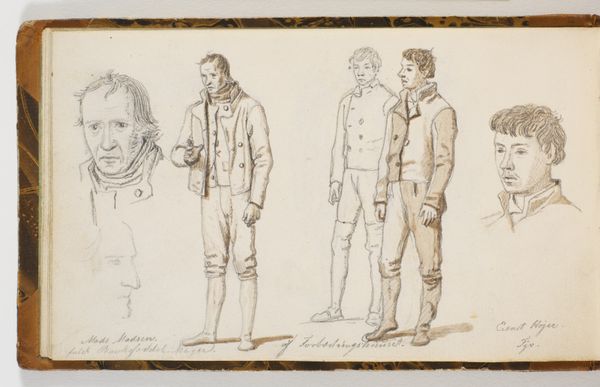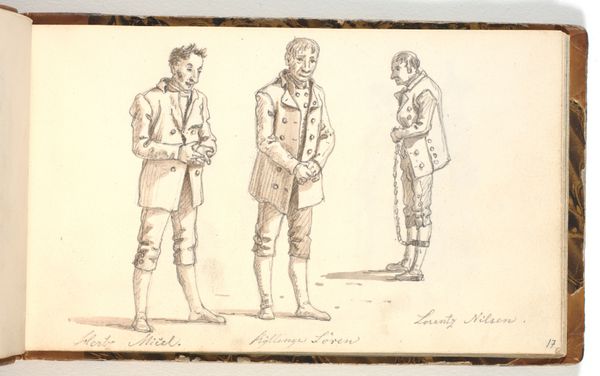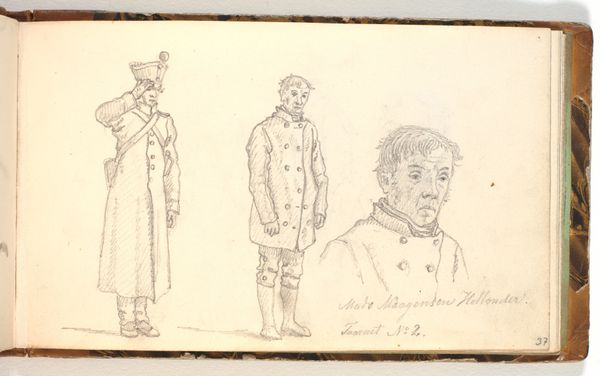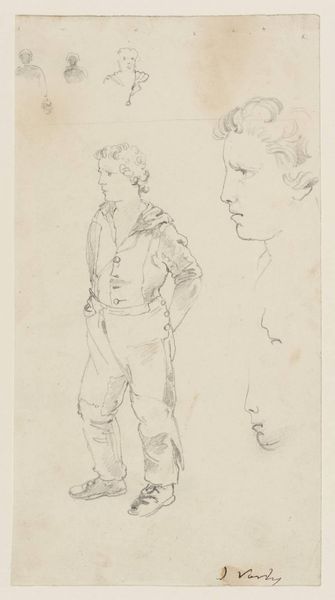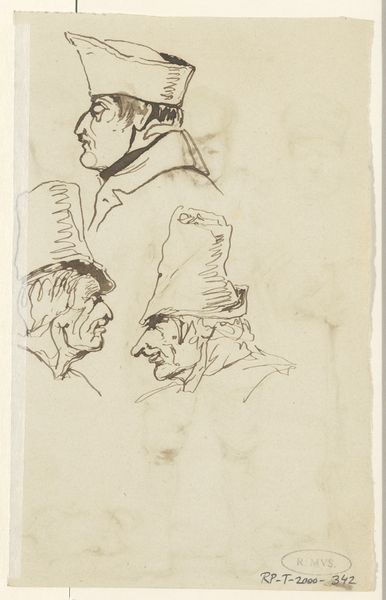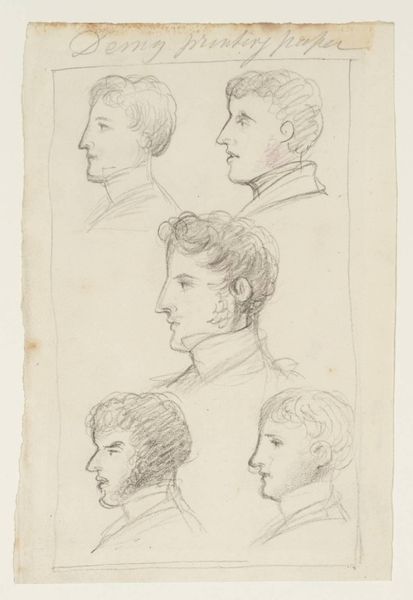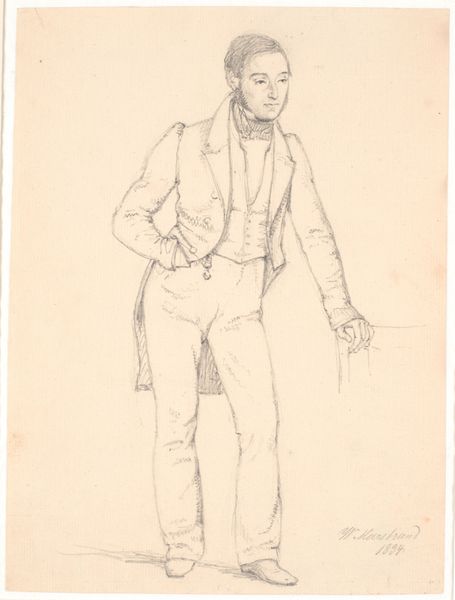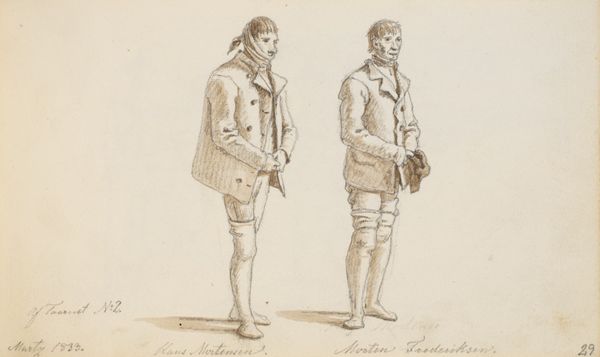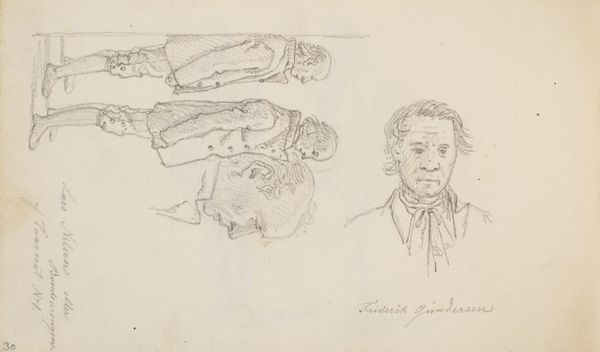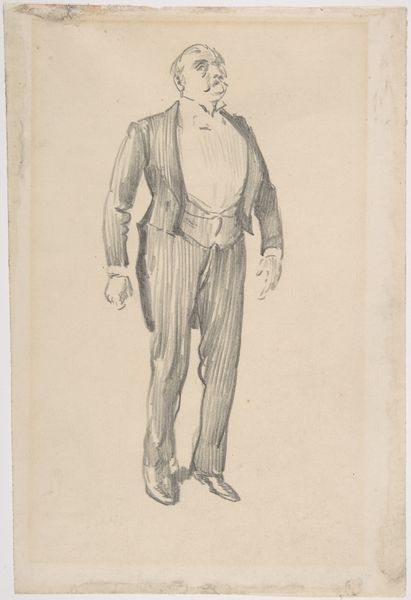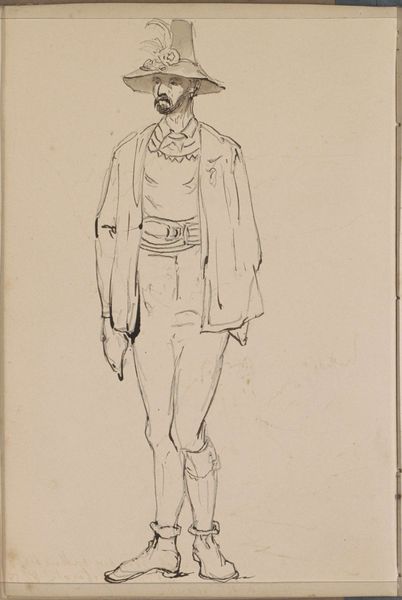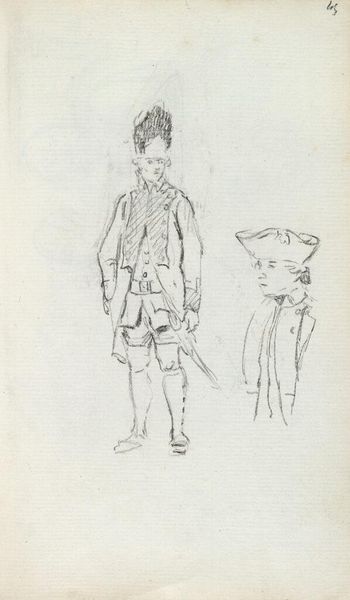
drawing, pencil
#
portrait
#
drawing
#
pencil sketch
#
figuration
#
character sketch
#
pencil
#
academic-art
Dimensions: 105 mm (height) x 176 mm (width) (bladmaal)
Curator: Here we have "Tre figurstudier," or "Three Figure Studies," by Martinus Rørbye, created in 1833. It's currently housed here at the SMK, Statens Museum for Kunst. Editor: Well, it looks like someone was practicing. A little austere, wouldn’t you say? Almost severe, but… charming. Like a perfectly polite historical novel. Curator: It's a pencil sketch, offering a window into Rørbye's process and the academic art conventions of his time. Note the visible pressure and variation in the pencil strokes and the paper support itself. This type of preliminary work highlights the labor inherent in artistic production, demystifying the "genius" narrative somewhat. Editor: True! You can almost feel him thinking. He's capturing light and form so economically... just whispers of graphite. Each character a different story distilled to its simplest visual terms. It reminds me of searching for the essence of a feeling through poetry. Curator: Absolutely. We should also consider the social context. The very act of sketching, readily available drawing paper, and pencils indicates shifts in materials production and accessibility. Editor: Hmm, interesting! I’m mostly struck by how immediate the characters seem, though. They are simple pencil lines and yet each carries such a distinct attitude. Curator: The arrangement invites a dialogue. It encourages us to compare and contrast the subjects in a structured fashion—maybe this mirrors societal structures, perhaps related to class and posture within them, subtly reinforced? Editor: Perhaps. For me, it's more about the human spirit, I think. Seeing these figures sketched quickly but confidently… it ignites the same kind of passion I have towards the little, lovely secrets that are revealed in art! Curator: So in thinking about it this way, it forces one to consider Rørbye's intent: Is this about conveying the truth through minimal means or fulfilling the conventions for representing figures? Editor: Perhaps it’s both—he works within a structure to subtly find and present a hidden humanity. Curator: Well put. A testament to both Rørbye’s skill as a draughtsman and the enduring power of preliminary artistic studies. Editor: Exactly, those lovely accidental encounters that feel like a discovery about something we’ve known all along.
Comments
No comments
Be the first to comment and join the conversation on the ultimate creative platform.
